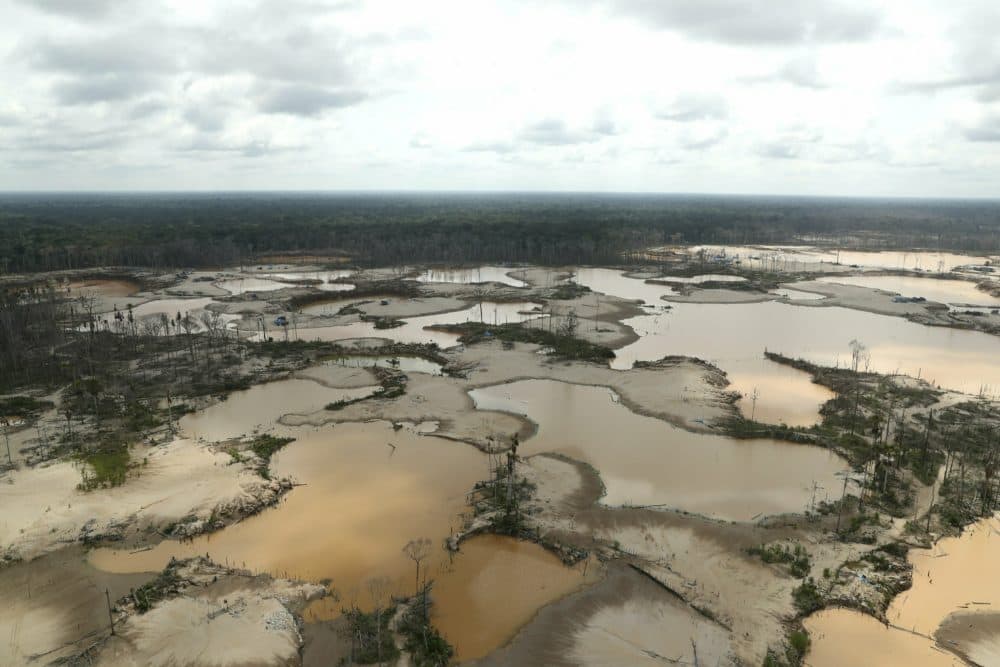Advertisement
No, The COVID-19 Pandemic Is Not Saving The Environment

During the COVID-19 pandemic, photos have shown peacocks prancing around Mumbai, crystal clear waters in the canals of Venice, and an influx of bees and rare wildflowers in the U.K.
These images are touted as evidence that the global coronavirus pandemic is helping the environment — but that's not the complete picture. A recent article co-authored by Colorado State University professor Edward Barbier explains how land grabs, illegal mining and lack of funding are devastating natural environments around the globe.
The International Energy Agency says the world will use 6% less energy this year, the largest reduction in 70 years. But that won’t make up for losses from practices such as deforestation and wildlife poaching, he writes.
In developing countries, lockdowns caused people who migrated from tropical rural areas to cities to move back to their rural communities, he says. People use nature as a resource for food and shelter in these areas, so now the land is under more intensive use.
A more “overwhelming problem” comes from people taking advantage of governments focusing on COVID-19 and not protecting remote tropical areas from illegal activity such as mining, he says.
Conservation groups that defend areas such as Kenya and the Galapagos don't have the same resources to fight the bad actors because of the lack of tourism. Restrictions on travel and operations coupled with isolation mean these organizations can’t legally monitor what’s going on, he says.
When people destroy natural habitats by building or logging, the creatures that live there are forced closer and closer to humans or other animals — which can cause zoonotic diseases. Wildlife trade and exploitation are the main drivers of disease transmission from animals to people, he says.
“When you exploit, trade and consume wildlife, then you come more in contact with them,” he says. “Not only are we impacting rural livelihoods of local communities by destroying tropical forests and other ecosystems, we're actually increasing possibly the risk of future disease transmission from wildlife to people.”
Despite the economic crisis sparked by COVID-19, Barbier sees some positive signs for the environment. The Intergovernmental Panel on Climate Change and other organizations have started a movement to consider land-use change, which contributes to about a quarter of global emissions, as part of climate strategy.
Advertisement
Many studies now show natural climate solutions — such as protecting, restoring and managing ecosystems — are essential and cost-effective in reducing emissions, he says. Plus, he thinks more people are starting to recognize that nature in rural tropical areas aren’t getting a break during the pandemic.
“I would like to see personally more of the fiscal stimulus that's being spent for emergency relief going to help poor countries that are affected by an uptake in tropical deforestation and land-use change,” he says, “to help them protect their areas from illegal exploitation.”
As the world faces a pandemic with no end in sight and protests in the U.S. sparking a global movement for racial justice, Barbier reiterates that climate change disproportionately impacts low-income communities and communities of color.
In both rural and urban areas, vulnerable people suffer from some of the most severe impacts of climate change such as droughts and flooding, he says.
“Increasingly we're becoming aware that climate change does not affect all people equally,” he says. “If you are poor, if you're vulnerable, you're subject to discrimination, if you are forced into crowded areas, you get the worst pollution. You get the worst hazards.”
The burden of climate change is falling on the poorest, most vulnerable people and the elderly — much like the pandemic, he says. While people in the U.S. might see other members of their family affected by unemployment or income loss, people in other parts of the world are also facing an array of added challenges because of climate change.
“The same thing is being felt by somebody in New Delhi or in the jungles of Brazil being exposed to all these pressures, climate change, biodiversity loss,” he says, “and, of course, now the pandemic.”
Karyn Miller-Medzon produced and edited this interview for broadcast with Peter O'Dowd. Allison Hagan adapted it for the web.
This segment aired on June 18, 2020.

